Key takeaways
- Evaluation of student presentations should focus on multiple dimensions, including clarity, authenticity, and engagement, to support student growth.
- Using tools like rubrics, video recordings, and peer feedback can enhance the evaluation process, making it fairer and more insightful.
- It’s important to balance objectivity with empathy, recognizing each student’s unique voice while assessing their understanding.
- Improving evaluation skills involves intentional observation, seeking feedback on one’s assessments, and regularly refining evaluation criteria.
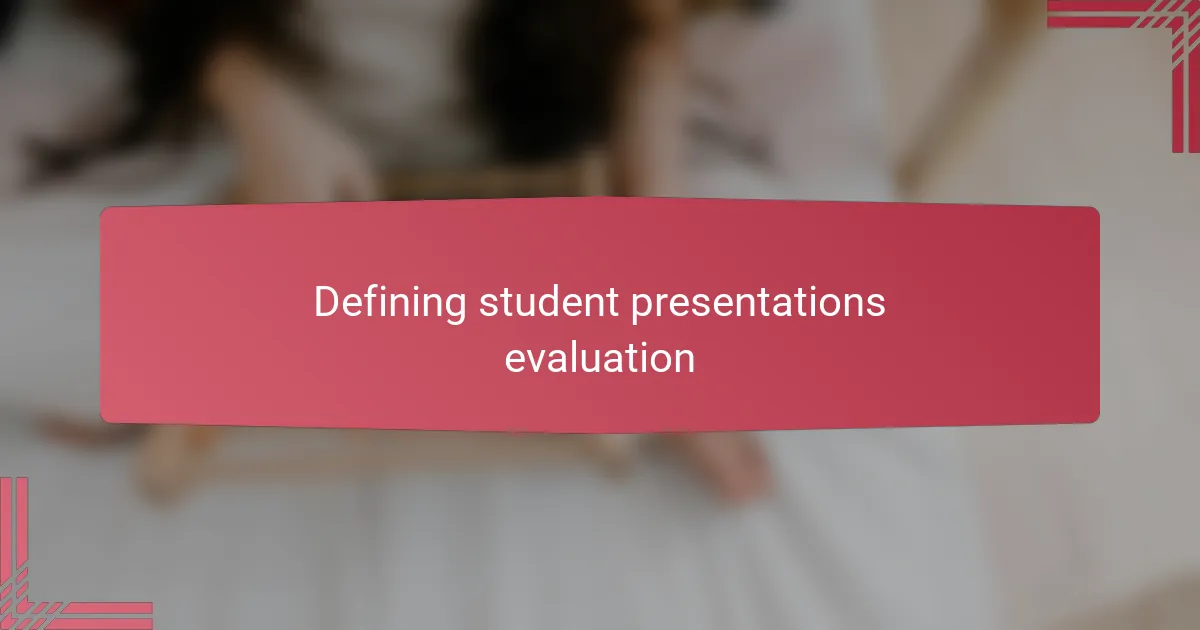
Defining student presentations evaluation
Evaluating student presentations, in my experience, is more than just assigning a grade—it’s about understanding how well students communicate their ideas and engage their audience. I often ask myself: Did the presentation reflect clear thinking, creativity, and passion for the topic? This reflection helps me see evaluation as a tool to support growth, not just judgment.
When I first started assessing presentations, I struggled with balancing content accuracy and delivery style. Over time, I realized that effective evaluation involves looking at multiple dimensions—how confidently students speak, how they organize their points, and how they respond to questions. Each element reveals a piece of the bigger picture of their learning journey.
Isn’t it true that evaluation sometimes feels subjective? That’s why I try to define clear criteria upfront while remaining open to the unique ways students express their understanding. For me, defining student presentations evaluation means creating a fair, transparent, and encouraging process, one that motivates students to improve and express themselves authentically.
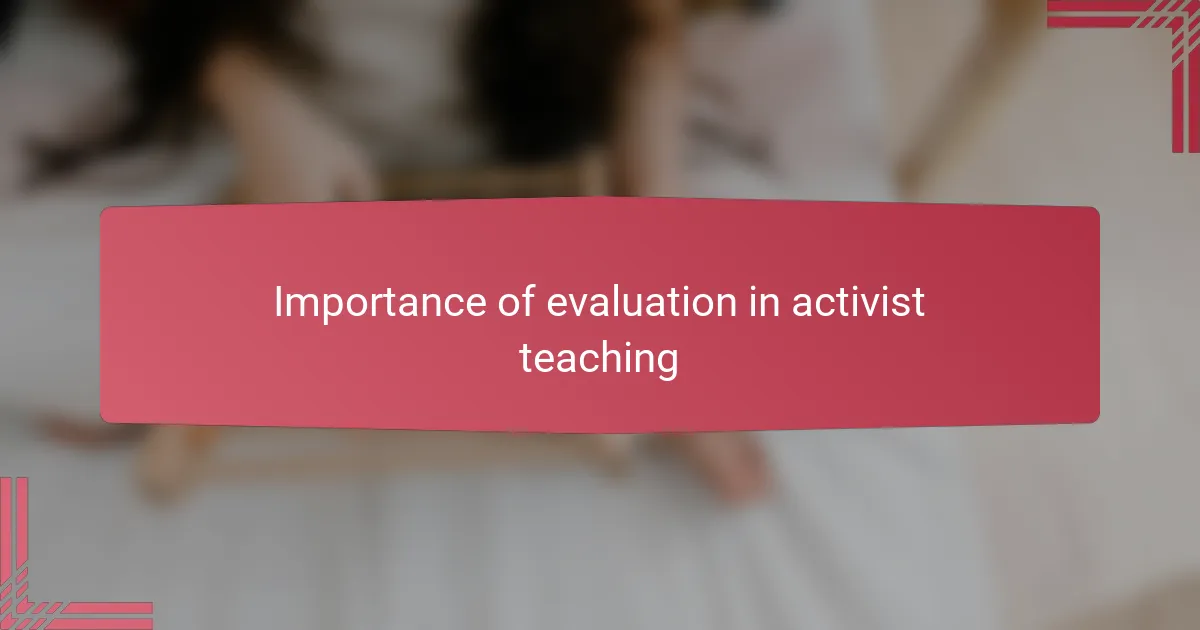
Importance of evaluation in activist teaching
Evaluation in activist teaching isn’t just about checking boxes; it’s a vital way to ensure students are not only learning but also connecting deeply with social issues. I’ve seen firsthand how thoughtful evaluation can boost a student’s confidence and commitment to activism by recognizing their effort to challenge norms. Have you noticed that when students feel truly heard and understood, their passion for change becomes even more palpable?
Sometimes, I wonder if we underestimate the power of evaluation to shape a student’s future actions. For me, evaluation is a moment to highlight the courage behind each presentation—the risk students take when they speak up about difficult topics. This acknowledgment turns feedback into encouragement, reinforcing their role as agents of change.
What makes evaluation crucial in activist teaching is its role in fostering critical thinking and empathy. When I assess presentations, I’m not just judging facts but also how students engage with different perspectives and connect with their audience emotionally. This approach, in my experience, cultivates more thoughtful, impactful activists ready to make a difference beyond the classroom.
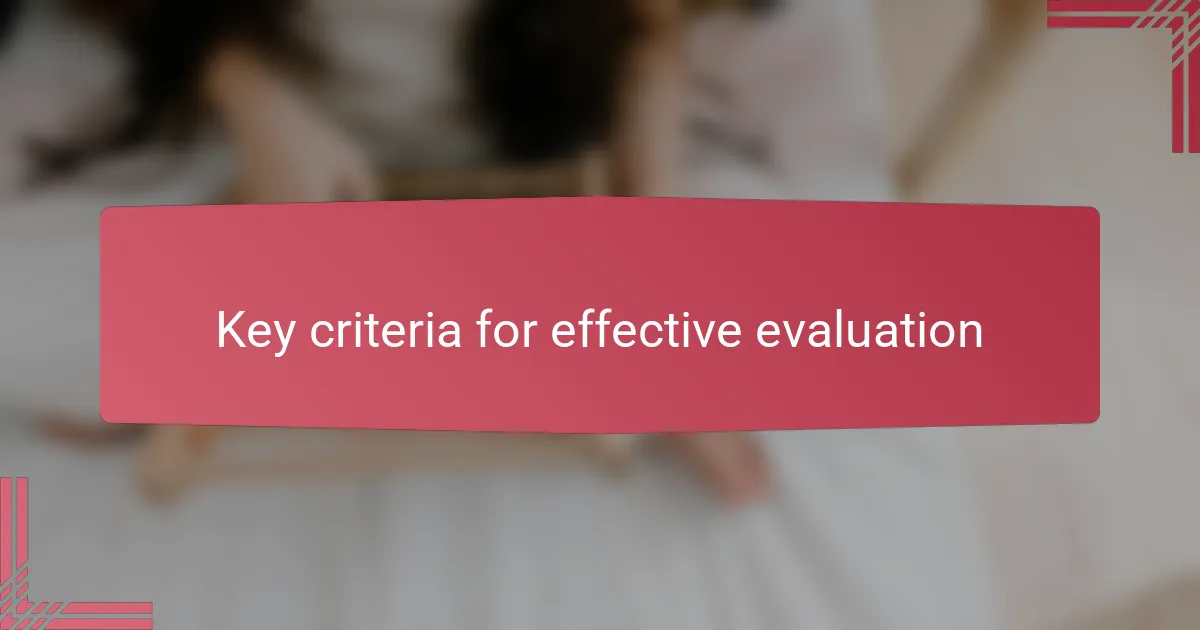
Key criteria for effective evaluation
What truly matters when I evaluate student presentations? For me, clarity stands out as a key criterion—do students express their ideas in a way that anyone can follow? I’ve noticed that when presentations are organized logically, the audience stays engaged, and the message resonates much stronger.
Another factor I pay close attention to is authenticity. I often ask myself, does the student’s passion come through? In my experience, presentations that reflect genuine interest and personal connection to the topic always leave a more lasting impression than those that simply check off requirements.
Finally, I can’t overlook how students handle interaction. How well do they respond to questions or challenges? I’ve seen that students who thoughtfully engage with their listeners demonstrate deeper understanding and confidence, which, to me, are vital signs of an effective presentation. Have you observed this dynamic as well? It’s that moment when evaluation feels less like judgment and more like recognizing growth in real time.

Tools and methods for assessing presentations
When I first started using tools for assessing presentations, rubrics became my go-to. They provide clear criteria and help me stay consistent, but what I appreciate most is how they guide students to understand exactly what’s expected. Have you ever noticed how a well-designed rubric can turn evaluation into a roadmap for improvement rather than just a score?
Beyond rubrics, I’ve also found video recordings invaluable. Watching presentations again allows me to catch nuances I might miss in the moment—like body language or vocal tone. Sometimes, reviewing these recordings reminds me that evaluation isn’t just about content; it’s about how students connect with their audience on a human level.
Then there’s peer feedback, which I treasure for its ability to foster a community of learning. Encouraging students to evaluate each other not only broadens perspectives but also builds critical listening skills. I often wonder—doesn’t this collaborative approach make the whole process feel more supportive and less intimidating? From my experience, it absolutely does.
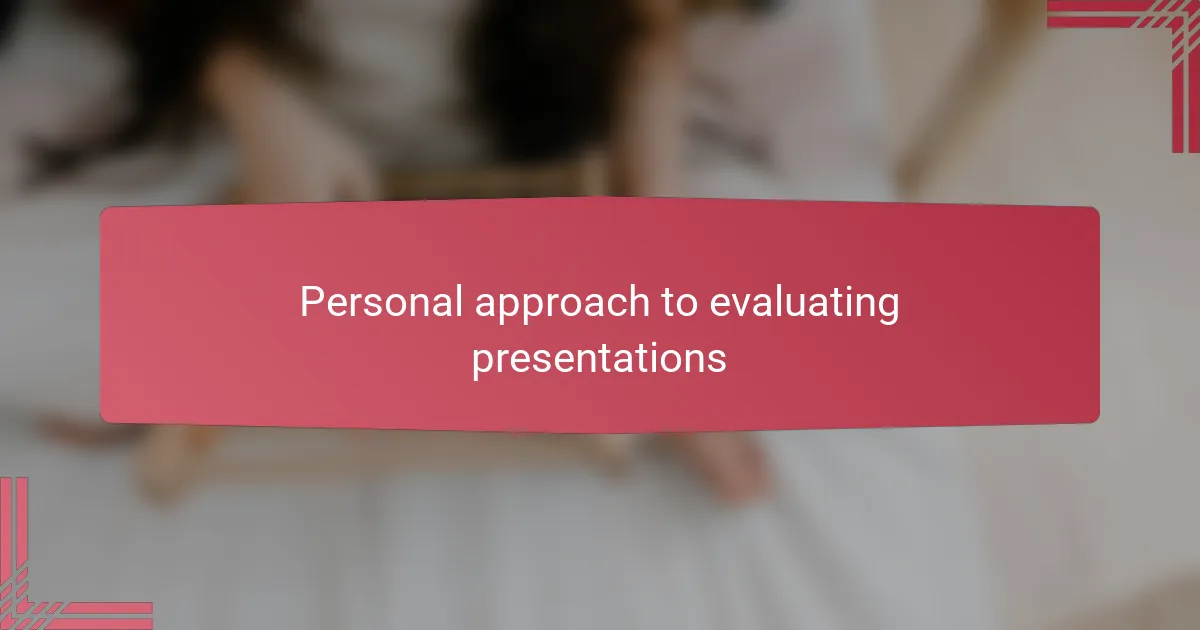
Personal approach to evaluating presentations
For me, evaluating presentations is deeply personal because it reflects each student’s voice and journey. I often find myself tuning into the subtle ways they express their conviction or grapple with complex ideas. Have you ever noticed how a student’s nervous smile or a brief pause can reveal as much as their words? Those moments remind me that evaluation is about honoring their courage, not just critiquing content.
I’ve learned that my approach has to be flexible—no two presentations are alike, and neither are the students behind them. Sometimes I have to pause my checklist and just listen, letting the student’s personality shape how I assess their work. This feels more human to me, fostering trust and encouraging authenticity rather than pushing students into a rigid mold.
At times, I catch myself reflecting on how my own expectations might influence my judgment. Does my personal bias sneak in when a presentation hits close to my values or experiences? Being aware of this keeps me grounded and committed to fairness, reminding me that every presentation is a chance to support growth, not confirmation of assumptions.
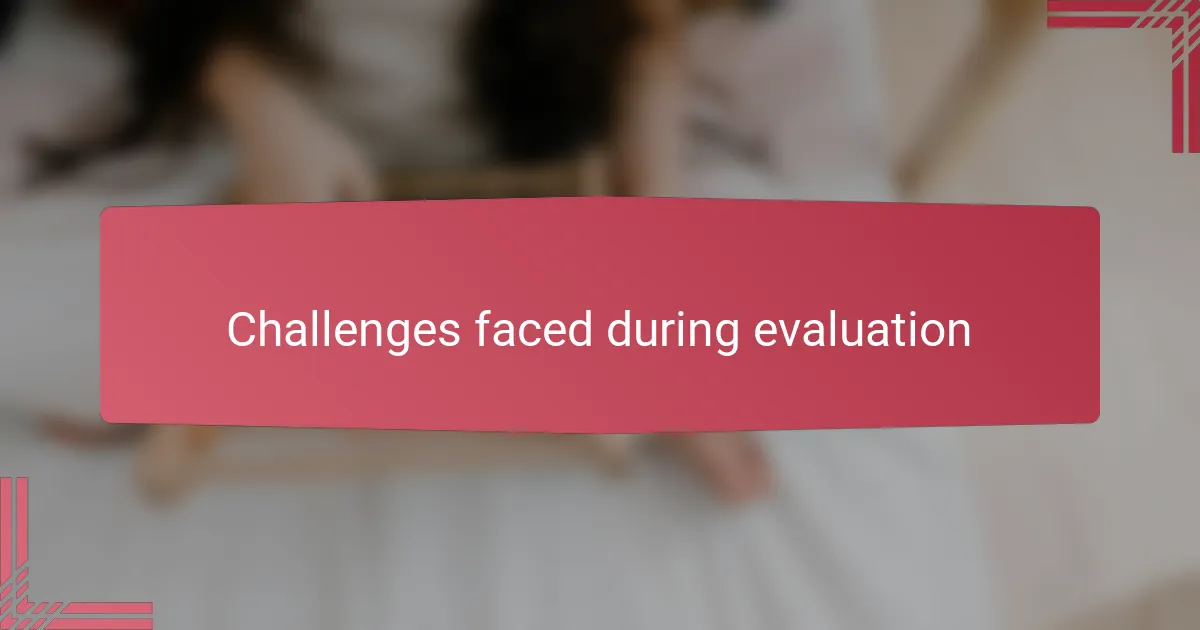
Challenges faced during evaluation
Evaluating student presentations often comes with the tricky challenge of balancing objectivity and empathy. I remember feeling torn between sticking strictly to my rubric and acknowledging the unique ways each student expressed their ideas. Have you ever found yourself wrestling with whether to deduct points for something that feels “off” but might actually be a student’s authentic voice? It’s a constant dance between fairness and encouragement.
Another hurdle I frequently faced was managing the sheer diversity in presentation styles and topics. Some students are naturally confident speakers, while others might struggle with nerves or language barriers. This variability sometimes made me question—am I truly evaluating their understanding, or just their comfort with public speaking? These doubts pushed me to reflect deeply on what aspects deserved more weight.
Finally, time constraints can’t be overlooked. When you have a packed schedule, it’s tempting to rush through evaluations or miss nuances that only reveal themselves on a second viewing. I often wished for more time to fully appreciate each presentation’s strengths and challenges. How often have you caught yourself hurriedly scribbling notes, knowing you might overlook something important? It’s a struggle I imagine many of us share.

Tips for improving evaluation skills
Improving evaluation skills, I’ve found, starts with practicing intentional observation. Instead of rushing to judgment, I pause to really notice the different layers—a student’s tone, body language, and the flow of their ideas. Have you tried focusing on one specific aspect each time you assess? It helps me become more precise without feeling overwhelmed.
Another tip I can’t recommend enough is seeking feedback on your own evaluations. Early in my career, a colleague pointed out when my comments felt vague or too harsh, and that moment transformed how I approached feedback. Reflecting on others’ perspectives not only sharpens my skills but also keeps me humble in this ongoing learning process.
Lastly, I’ve learned that refining evaluation rubrics is crucial. When I adjust criteria to match the unique goals of each assignment or group, evaluation feels fairer and more meaningful. Do you revisit your rubrics regularly to ensure they truly capture what matters? From my experience, this simple habit makes all the difference in delivering constructive, relevant feedback.